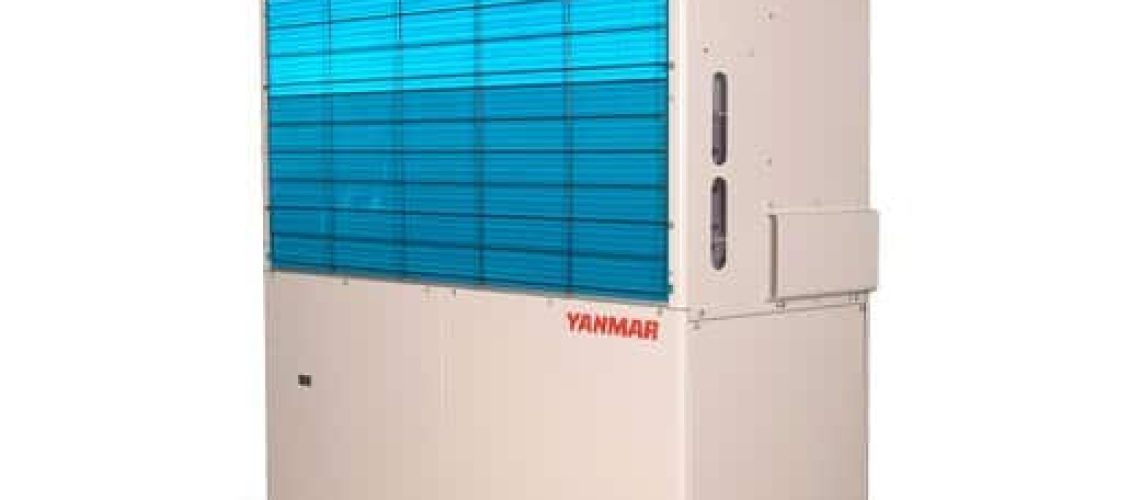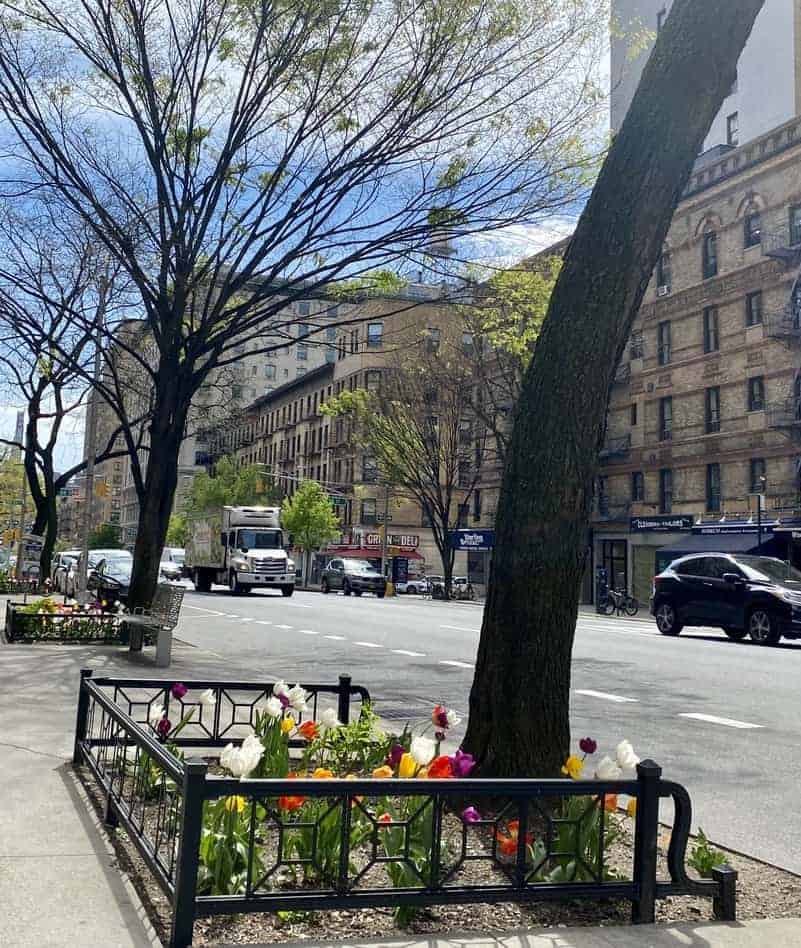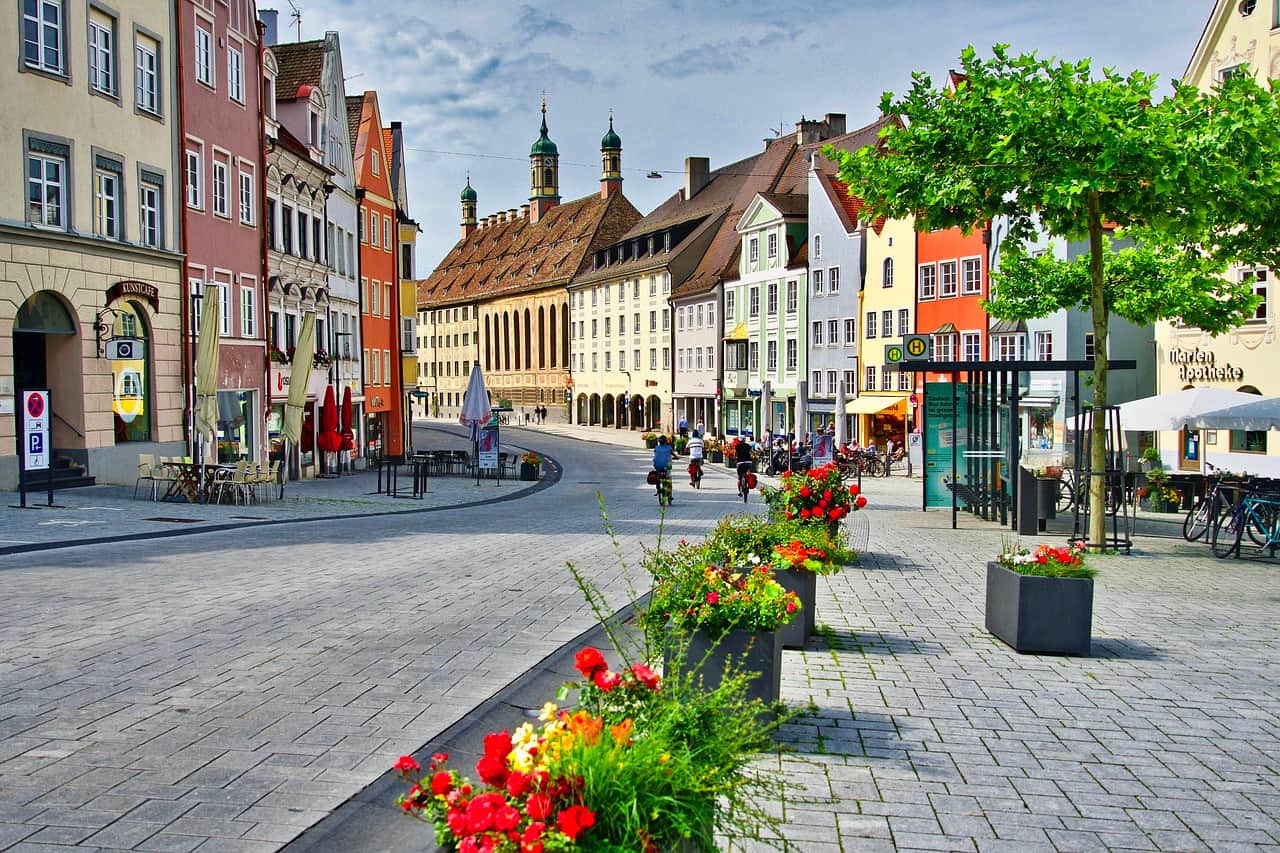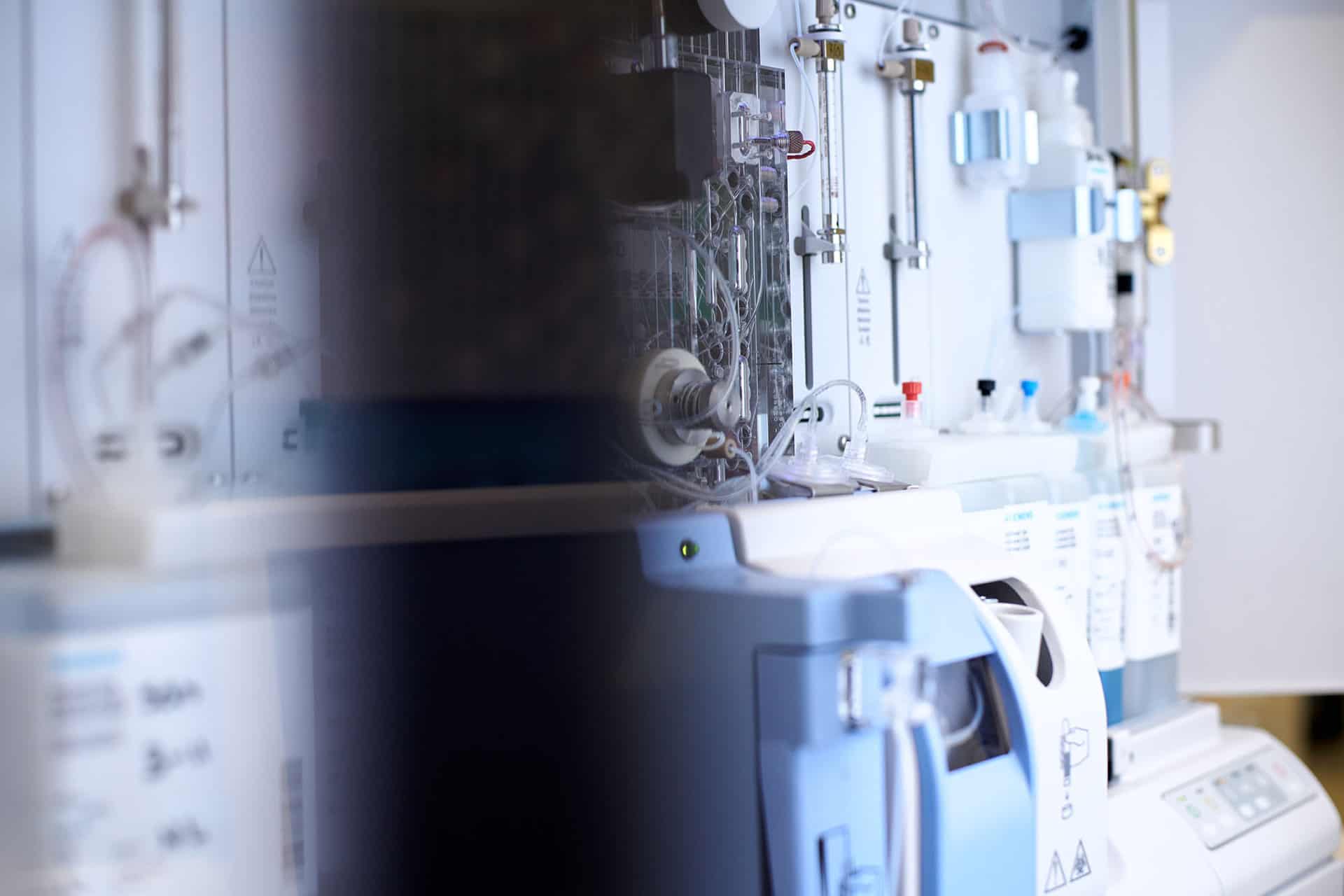With the current energy and heating systems in most commercial and residential buildings across the United States, we are wasting a lot of energy that could be used to heat or cool these buildings more efficiently. Enter VRF or Variable Refrigerant Flow Systems. At Highland West Energy, we proudly distribute and install Yanmar VRF systems in order to provide environmentally friendly and efficient heating and cooling systems to all of our clients. VRF systems can be used in conjunction with other green energy generators such as CHP (Combined Heat and Power) technologies, which are also manufactured by Yanmar. Let’s take a closer look at what VRF is, it’s many benefits and how it can be applied for various applications.
What is VRF?
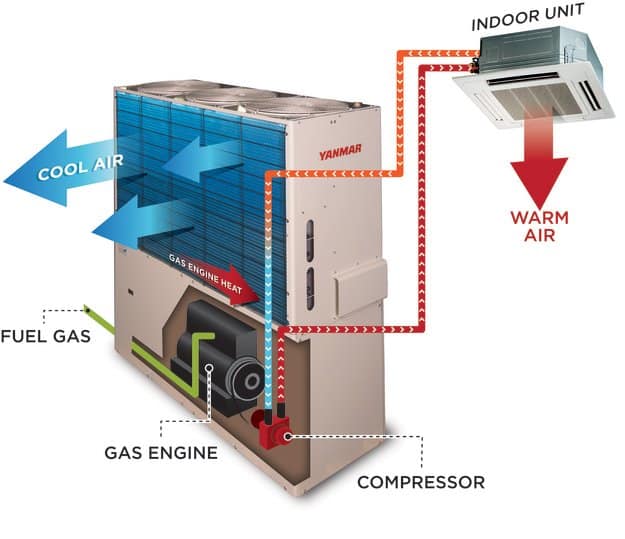
VRF also known as VRV (Variable Refrigerant Volume), is a heating and cooling technology that was first invented by Daikin Industries, Ltd. in 1982.
VRF systems use a refrigerant that is modified by an outdoor unit, that then circulates hot or cool air inside the building usually to multiple rooms, floors, and areas in the building- this is also referred to as advanced zoning in the case of Yanmar technologies. VRF systems usually are installed with an air conditioner inverter in order to change direct current to alternating current (AC) with the addition of a dual scroll compressor or another type of DC inverter. Rather than simply being an on or off type of operation, this type of technology supports the fluctuating motor speeds, allowing for flexible refrigerant flow throughout different zones in the building.
Thus, by operating at varying speeds, VRF systems are able to only work as needed, which means a considerable amount of energy savings for the building and monetary savings for the wallet.
VRF units come in either two or three pipe systems:
- Two Pipe Systems: This system is used to maintain a consistent temperature throughout a building. Two pipe units are generally used for smaller structures that don’t demand the same type of cooling and heating needs required by larger buildings with multiple zones. Two pipe VRF units can only be used for heating or cooling at one time, the two different climates cannot occur simultaneously, unless equipped with a three pipe system.
- Three Pipe Systems: For larger buildings that require variable temperatures for different zones and levels, a three pipe system is the best choice. The 3 pipe system designed by Yanmar enables cooling and heating to work simultaneously in different zones as needed.
Cooling With VRF
The indoor unit’s coils capture the heat from the surrounding air and then transfer into the refrigerant lines and refrigerant. The heat that is captured is then passed via the lines to the outdoor coils of the outdoor unit, thus expelling the heat into the air outside.
Heating With VRF
The outdoor unit captures the heat from the outside through it’s coils. Yanmar’s technology is even able to work at 0 degrees fahrenheit, by being able to still capture 85% usable air from the outside. This outside heat is transferred through the refrigerant and the refrigerant lines to the indoor unit inside of the building. Once the heat is transferred, the fan of the indoor unit pushes the output of the heat into the specified zone.
The Benefits of VRF
Each Yanmar VRF system is partnered with a dependable Yanmar natural gas-powered engine. This engine allows the outdoor unit to efficiently operate at varying speeds depending on the cooling and heating requirements of specific zones. Yanmar’s VRF system offers precise temperature control, that when paired with its dual scroll compressors, delivers comfort that is efficient and eco-friendly.
By using natural gas, these Yanmar VRF units are able to produce less greenhouse gases than systems that are powered by coal. By reducing harmful greenhouse gas emissions into the atmosphere, we can hope to preserve our natural resources as well as, reduce the negative impacts caused by greenhouse gases.The numbers for these reductions by using a Yanmar VRF system when compared to a coal operated unit are as follows:
- 80% less NOx (Nitrogen Oxide)
- 100% less SOx (Sulphur Oxide)
- 35% less CO2 (Carbon Dioxide)
In addition to reducing carbon, nitrogen, and sulphur emissions, VRF heating and cooling units can help to cut back on energy expenses by up to 90% in most cases. Similarly, since VRF systems directly consume natural gas, there is no electricity lost as is the case for most off-site operations. VRF systems are able to create a multi-faceted heating and cooling system that can be created on-site. No routing through transformers or energy wasted on miles and miles of power lines here! Yanmar VRF systems provide almost 100% of the energy required to both heat and cool your building.
For example, let’s take a look at the following case study performed by Yanmar. The following project was commissioned in February of 2017 and has displayed amazing results.
VRF Case Study: Trion High School Weight Room in Trion, Georgia
According to this case study, “ The Trion High School Weight Room is a 50’ x 90’ metal building located next to Trion City Schools’ new gymnasium… (this room) features two-inch thick rubber tile with areas for weights, showers, a changing room and an electrical room.” Yanmar installed a 10 ton Yanmar NNCP120J VRF unit, featuring 3 indoor fan coil units paired with Yanmar remote monitoring and an Intelligent Touch Controller (ITC).
This system is backed by a 5 year/20,000 hour parts; 1 year/4,000 hour labor and 7 year/28,000 hour compressor warranty from the date it was commissioned, produced astounding results. Which so far have included:
- The reduction of electrical consumption via the VRF system. This was able to occur by switching over to a natural gas Yanmar engine, rather than a coal operated unit.
- This project has a projected payback period of less than 5 years (unheard of in this industry). The projected date is based of off the fact that there was over a $3,500 amount of savings in just the first three months of operation.
- In addition to energy and money saved, by using a VRF natural gas operated system as the main heating and cooling system, the building is able to create less harmful emissions when compared to traditional forms of heating and cooling technology.
In conclusion, the article goes onto say that city of Trion, Georgia was so impressed with Yanmar’s VRF system that they have already began to install another multi-unit VRF system for the city’s recreations center, which is commissioned for August of 2017.
The advanced multi-zone operation of Yanmar systems allows you to have complete and utter control over your buildings environment and in each room! Each room can be outfitted with an individual Daikin indoor unit and its own thermostat. Additionally, rooms that are not in use can be turned off in order to reduce energy output, thus reducing your bottomline.
Who Can Use VRF Systems?
With so many benefits offered by VRF systems, it can be hard not to want one of these units in every home, business, and building across the United States. The good news is, is that VRF systems can be applied to all of these building and more. Yanmar VRF systems are suitable for, but not limited to, the following:
- Public Schools, Private Schools, Colleges and Universities.
- Hospitals, Urgent Care Centers, Assisted Living Homes, and Mental Hospitals.
- Hotels and Motels
- Multi-Unit Housing
- Offices
- Restaurants
The list is truly endless, if you are a business owner, project manager or would just like more information how to switch over to a more eco-friendly, more efficient way to heat and cool your building, on-site, contact Highland West Energy today. We are always happy to answer any and all question you may have as well as, provide a free savings assessment for your project to see just how much money you are project to save when you switch to VRF systems by Yanmar.
.
